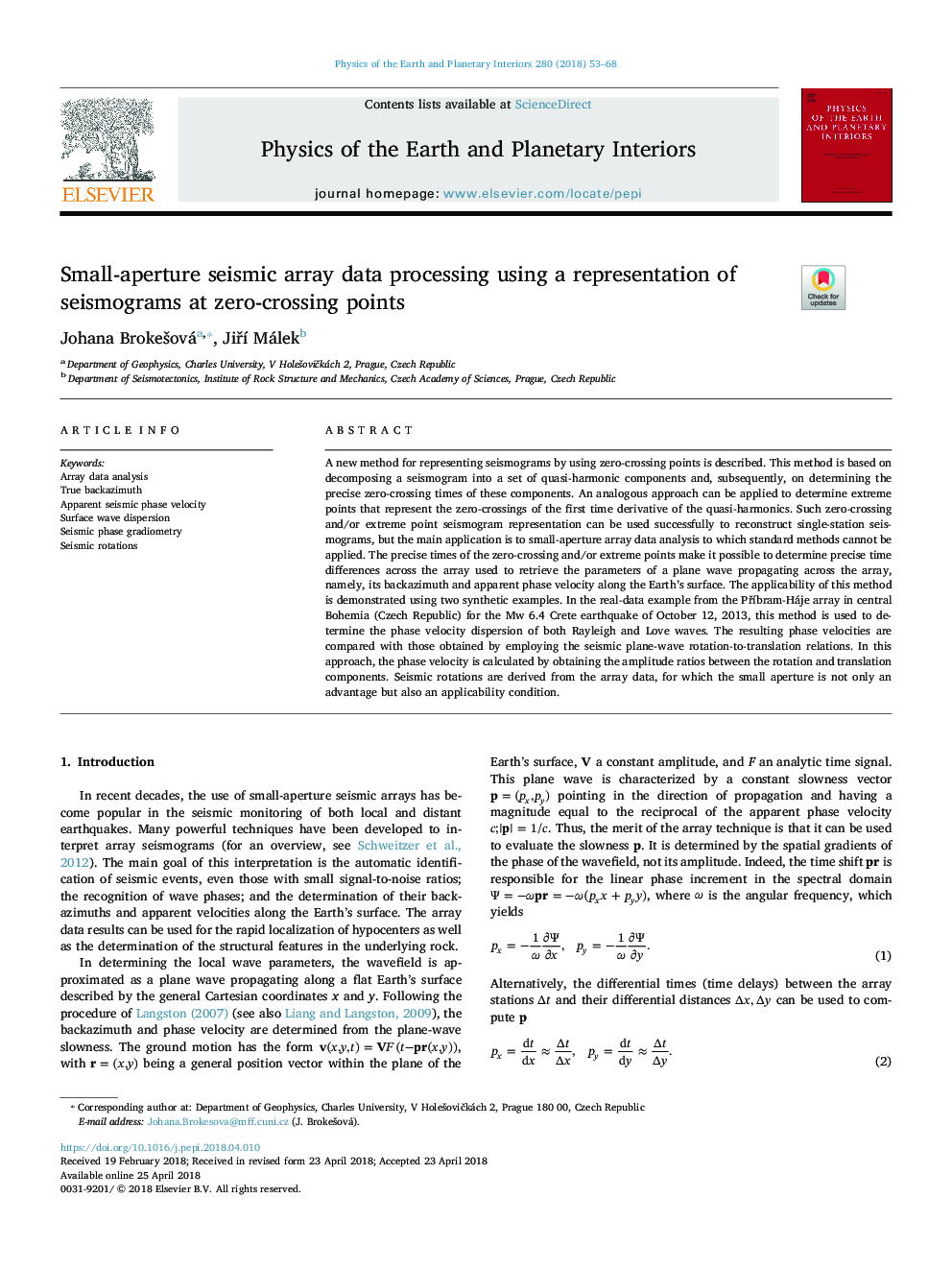| کد مقاله | کد نشریه | سال انتشار | مقاله انگلیسی | نسخه تمام متن |
|---|---|---|---|---|
| 8915686 | 1641460 | 2018 | 16 صفحه PDF | دانلود رایگان |
عنوان انگلیسی مقاله ISI
Small-aperture seismic array data processing using a representation of seismograms at zero-crossing points
ترجمه فارسی عنوان
پردازش داده های آرایه لرزه ای کوچک با استفاده از نمایش لرزه ای در نقاط عبور صفر
دانلود مقاله + سفارش ترجمه
دانلود مقاله ISI انگلیسی
رایگان برای ایرانیان
کلمات کلیدی
تجزیه و تحلیل داده های آرایه، حسی واقعی سرعت فیزیکی لرزه ای ظاهری، پراکندگی موج سطح، گریودیمتری فاز لرزه ای، چرخش لرزه ای،
موضوعات مرتبط
مهندسی و علوم پایه
علوم زمین و سیارات
فیزیک زمین (ژئو فیزیک)
چکیده انگلیسی
A new method for representing seismograms by using zero-crossing points is described. This method is based on decomposing a seismogram into a set of quasi-harmonic components and, subsequently, on determining the precise zero-crossing times of these components. An analogous approach can be applied to determine extreme points that represent the zero-crossings of the first time derivative of the quasi-harmonics. Such zero-crossing and/or extreme point seismogram representation can be used successfully to reconstruct single-station seismograms, but the main application is to small-aperture array data analysis to which standard methods cannot be applied. The precise times of the zero-crossing and/or extreme points make it possible to determine precise time differences across the array used to retrieve the parameters of a plane wave propagating across the array, namely, its backazimuth and apparent phase velocity along the Earth's surface. The applicability of this method is demonstrated using two synthetic examples. In the real-data example from the PÅÃbram-Háje array in central Bohemia (Czech Republic) for the Mw 6.4 Crete earthquake of October 12, 2013, this method is used to determine the phase velocity dispersion of both Rayleigh and Love waves. The resulting phase velocities are compared with those obtained by employing the seismic plane-wave rotation-to-translation relations. In this approach, the phase velocity is calculated by obtaining the amplitude ratios between the rotation and translation components. Seismic rotations are derived from the array data, for which the small aperture is not only an advantage but also an applicability condition.
ناشر
Database: Elsevier - ScienceDirect (ساینس دایرکت)
Journal: Physics of the Earth and Planetary Interiors - Volume 280, July 2018, Pages 53-68
Journal: Physics of the Earth and Planetary Interiors - Volume 280, July 2018, Pages 53-68
نویسندگان
Johana BrokeÅ¡ová, JiÅà Málek,
